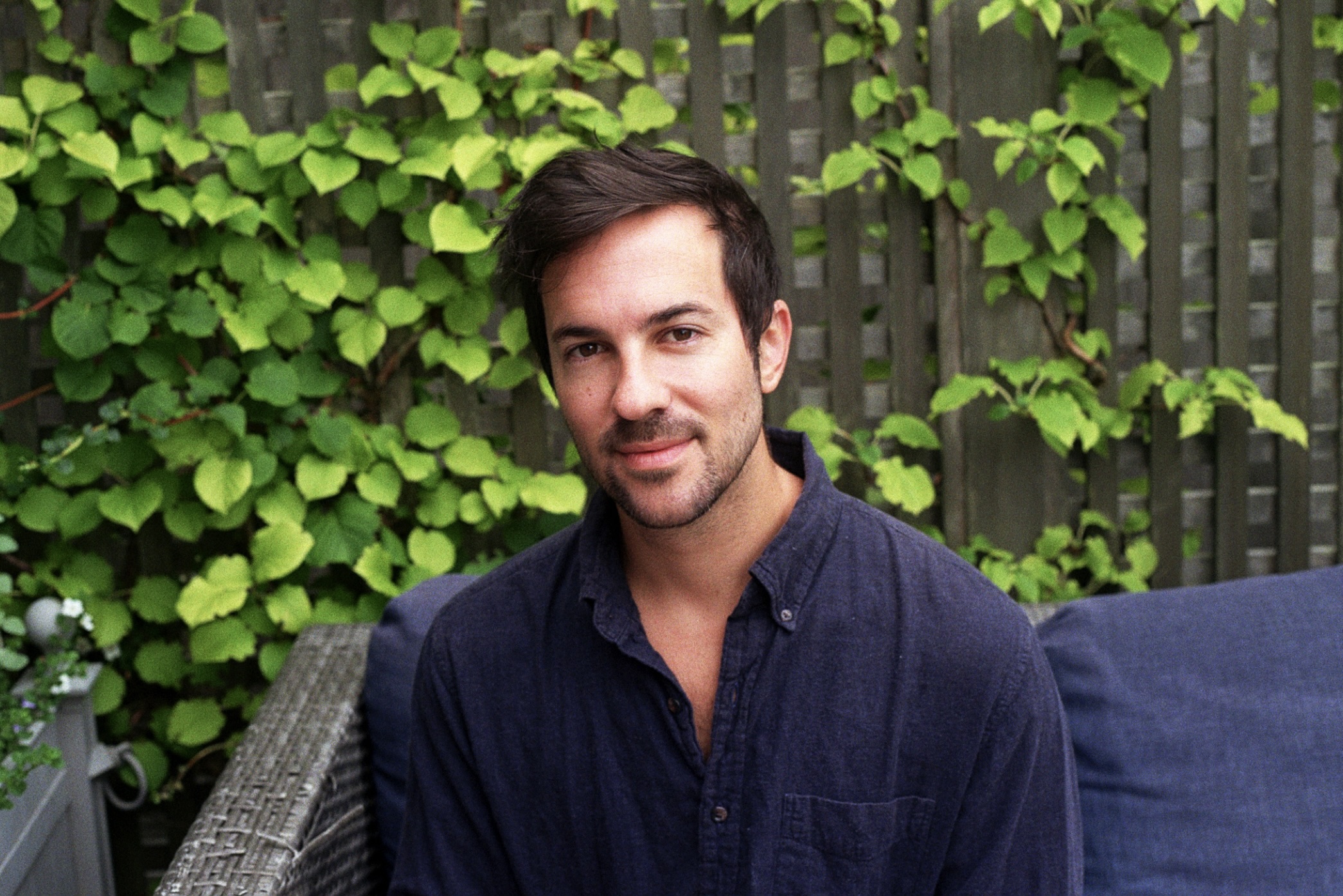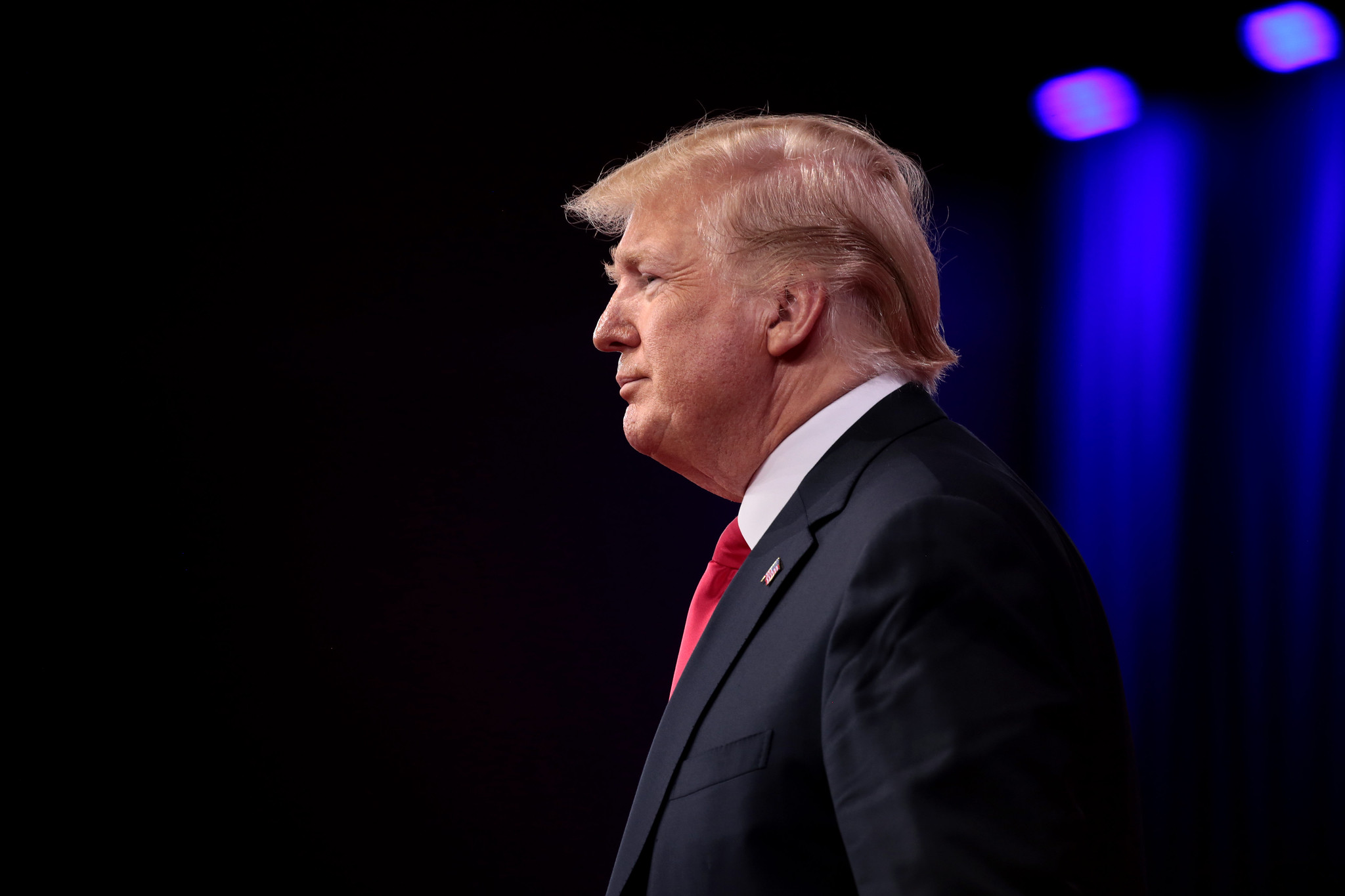Trump Jan. 6 Indictment: The Facts
.jpeg?sfvrsn=cd367664_5)
Published by The Lawfare Institute
in Cooperation With

The indictment handed up today by the Jan. 6 grand jury in Washington declares flatly that former President Donald J. Trump lost the 2020 presidential election but, despite having lost, “was determined to remain in power.” To that end, the government alleges that he knowingly spread lies that there had been widespread fraud in the election and that he had actually won. According to the indictment, Trump repeated these false claims in the two months following Election Day on Nov. 3, 2020, “to make his knowingly false claims appear legitimate, create an intense national atmosphere of mistrust and anger, and erode public faith in the administration of the election.”
In a separate article, we offer an overview of the indictment and some analysis of it and Trump’s likely defenses. In another article, we dig into the statutes under which Special Counsel Jack Smith charged the former president.
In this article, however, we endeavor only to lay out the facts as alleged in the indictment.
While conceding Trump’s right to speak publicly about the election and formally challenge the results, which he did, the special counsel alleges that he pursued illegal means as well. In the process, the former president allegedly perpetrated three criminal conspiracies, in violation of 18 U.S.C. § 371, 18 U.S.C. §§ 1512(c)(2) and 1512(k), and 18 U.S.C. § 241.
These conspiracies targeted “a bedrock function of the United States federal government: the nation’s process of collecting, counting, and certifying the results of the presidential election,” the special counsel claims.
The indictment lists six co-conspirators in this effort:
- Co-Conspirator 1, described as “an attorney who was willing to spread knowingly false claims and pursue strategies that the Defendant’s 2020 re-election campaign attorneys would not,” appears to be Rudy Giuliani.
- Co-Conspirator 2, another attorney “who devised and attempted to implement a strategy to leverage the Vice President’s ceremonial role overseeing the certification proceeding to obstruct the certification of the presidential election,” is likely John Eastman.
- Co-Conspirator 3 is also an attorney, one “whose unfounded claims of election fraud the Defendant privately acknowledged to others sounded ‘crazy.’” This co-conspirator is likely Sidney Powell, whose “disinformation” Trump “embraced and publicly amplified.”
- Co-Conspirator 4, described as “a Justice Department official who worked on civil matters and who, with the Defendant, attempted to use the Justice Department to open sham election crime investigations and influence state legislatures with knowingly false claims of election fraud,” we can safely assume is Jeffrey Clark.
- Another attorney, Co-Conspirator 5, “assisted in devising and attempting to implement a plan to submit fraudulent slates of presidential electors to obstruct the certification proceeding,” is likely Kenneth Chesebro.
- And finally, Co-Conspirator 6, described as “a political consultant who helped implement a plan to submit fraudulent slates of presidential electors to obstruct the certification proceeding,” remains shrouded in mystery at the time of publication.
None of these co-conspirators are named as co-defendants in the case, though the evidence cited against some of them is plentiful and quite damning. This is likely because prosecutors wanted to focus on Trump individually in this case, both for reasons of timing and because of his being a former president. But it leaves an expectation that further indictments are likely on the way.
The indictment describes in detail the manner and means by which Trump allegedly conspired to impede and obstruct the collecting, counting, and certifying of votes in the presidential election. These means included an attempt to lean on state officials to subvert the vote; a scheme to organize fraudulent slates of electors in Arizona, Georgia, Michigan, Nevada, New Mexico, Pennsylvania, and Wisconsin; an attempt to recruit the Justice Department to conduct sham investigations of voter fraud; an effort to convince Pence to obstruct the vote certification proceeding over which he presided; and an attempt to exploit the violence and chaos of the Jan. 6 attack on the Capitol to disrupt and delay that certification proceeding.
Think of conspiracy alleged in the indictment as a kind of octopus, with Trump as the head and each separate scheme to subvert the election as an arm. This also tracks with the way the Jan. 6 committee thought about the case.
Evidence That Trump Knowingly Spread Lies
Not only did Trump and his co-conspirators allegedly spread “prolific lies” about election fraud—but they did so with ample knowledge of the “falsity” of their claims, according to the government. The indictment lists eight people, groups of people, or institutions who told Trump that his claims were untrue. These were the people “on whom he relied for candid advice on important matters, and who were best positioned to know the facts,” and in each instance Trump deliberately disregarded their warnings.
The people or groups who told Trump that his claims of election fraud had no basis in fact were (1) Vice President Pence, who looked into the fraud allegations at Trump’s direction; (2) Trump-appointed Justice Department senior officials who investigated allegations of election crimes; (3) the director of national intelligence; (4) the director of the Department of Homeland Security’s Cybersecurity and Infrastructure Security Agency, who announced publicly that claims of election fraud were unsubstantiated, after which Trump fired him; (5) senior White House attorneys; (6) senior staffers on Trump’s reelection campaign; (7) state legislators and officials, many of them Trump allies; and (8) the state and federal courts that rejected every post-election challenge filed by Trump and his co-conspirators.
Despite these instances in which credible or trusted sources informed Trump that his claims were false, he continued to spread lies. These lies included a claim that more than 10,000 dead people voted in Georgia; that there were 205,000 more votes than voters in Pennsylvania; that there had been a “suspicious vote dump” in Detroit, Michigan; that there had been tens of thousands of double votes and other fraud in Nevada; that more than 30,000 non-citizens had voted in Arizona; and that voting machines in various contested states had switched votes from Biden to Trump. For each of these lies, credible sources with access to relevant information explained to Trump or announced publicly that they were just that—lies.
Shortly after Election Day, the indictment alleges, Trump and Co-Conspirator 1 (Giuliani) launched a large-scale scheme “to use knowing deceit in the targeted states to impair, obstruct, and defeat the federal government function” and cajole state officials to change electoral votes in favor of Trump. The states that were targeted were Arizona, Georgia, Michigan, Pennsylvania, and Wisconsin.
Attempts to Convince State Officials to Subvert the Results and Change Electoral Votes
Here is a brief synopsis of the allegations concerning each state.
Arizona
On Nov. 13, 2020, the same day Trump’s attorneys conceded in court that he had lost the presidential vote count in Arizona, Trump had a conversation with campaign manager Bill Stepien, who informed the former president that a claim that a “substantial number of non-citizens” had voted in the state was false. About a week later, despite this knowledge, Trump and Co-Conspirator 1 (Giuliani) allegedly called Arizona House Speaker Rusty Bowers in an attempt to convince him that a substantial number of non-citizens, non-residents, and dead people had cast fraudulent votes. Despite their failure to provide evidence to support these claims, Trump and Giuliani then asked Bowers to call the Arizona legislature into session to hold a hearing based on their claims of election fraud. Bowers refused. Still, Trump and Giuliani persisted and asked Bowers to replace Arizona’s valid electors with a new slate of electors that would vote for Trump. Bowers refused again and responded that the suggestion was “beyond anything he has ever heard of or thought of as something within his authority.” In a meeting with Giuliani a few weeks later, Bowers again asked for evidence to support Trump’s claims of election fraud. Giuliani responded, “We don’t have the evidence, but we have lots of theories.”
On Jan. 4, 2021, just two days before the attack on the U.S. Capitol, Giuliani contacted Bowers once again, urging him to have the Arizona state legislature decertify the state’s legitimate electors. Again, Bowers refused and informed Giuliani that Arizona’s investigations had found no evidence in support of his and Trump’s claims of fraud. In response, Giuliani admitted that he was not very well informed “about the facts on the ground” in the state but nonetheless continued to pressure Bowers, who, again, refused.
On Jan. 6, despite his knowledge that they were false, Trump publicly repeated claims of outcome-determinative fraudulent voting in Arizona.
Georgia
The indictment asserts that on Nov. 16, 2020, Trump’s executive assistant sent Co-Conspirator 3 (Sidney Powell) a document criticizing what is almost certainly Dominion Voting Systems—a voting machine company used throughout the United States—with the caption “See attached—Please include as is, or almost as is, in lawsuit.” Powell responded nine minutes later, writing that the information “must” go in all lawsuits in Georgia and Pennsylvania alongside a fraud claim that “requires the entire election to be set aside.”
Approximately a week later, the special counsel alleges, Powell filed a lawsuit against Georgia Governor Brian Kemp (R), in which she falsely alleged that there was “massive election fraud” in Georgia as a result of the use of Dominion voting machines. Trump publicly expressed support for the lawsuit on Twitter, the indictment states, despite privately conceding that Powell’s claims were unsupported and that she sounded “crazy.” On Dec. 7, 2020, Powell’s lawsuit was dismissed.
While Powell was pursuing her claims of fraud in court, Giuliani was in contact with the state’s legislators. On Dec. 3, 2020, he allegedly gave a presentation to Georgia state senators, in which he falsely claimed that more than 10,000 dead people had voted in the state, and encouraged members to decertify the state’s electors based on these allegations.
Also included in this presentation was a “misleading” video recording of election workers counting ballots at State Farm Arena in Atlanta, the indictment claims. The video was edited to depict election workers “counting ‘suitcases’ of illegal ballots.” Trump, knowing that the claims in Giuliani’s presentation were false, issued a tweet about the “blockbuster testimony” taking place and claimed that the video depicted evidence of “ballot stuffing by Dems when Republicans were forced to leave” the counting room. The next day on Dec. 4, 2020, the Georgia secretary of state’s chief operating officer confirmed in a tweet and at a press conference that the video provided no evidence of fraud.
The indictment details the frustration on this matter of a Trump campaign senior adviser, who on Dec. 8 allegedly wrote in an email regarding Trump’s claims about election fraud in Georgia, “When our research and campaign legal team can’t back up any of the claims made by our Elite Strike Force Legal Team, you can see why we’re 0-32 on our cases. I’ll obviously hustle to help on all fronts, but it’s tough to own any of this when it’s all just conspiracy shit beamed down from the mothership.”
Just four days before Georgia’s valid electors were slated to send their votes to Congress, Giuliani appeared before Georgia state legislators again, playing the State Farm Arena video for a second time. This time, the indictment states, Giuliani cited two election workers by name, Ruby Freeman and Shaye Moss (who testified about their experience before the Jan. 6 committee in June 2022), and accused them of committing voter fraud. As a result, the two workers received numerous threats of death and violence.
On Dec. 15, Trump met and spoke with the acting attorney general and acting deputy attorney general in the Oval Office to discuss the State Farm Arena video and his allegations of fraud. The Justice Department officials rebuffed Trump’s claims and explained that the video Giuliani had used as evidence of widespread fraud was “benign.”
Trump also perpetuated false fraud claims about another polling place in Georgia, prosecutors allege. Trump Chief of Staff Mark Meadows personally observed the signature verification process at the Cobb County Civic Center on Dec. 22 and notified Trump that the state election officials were “exemplary” and would find fraud if it existed. Still, the next day, Trump tweeted that Georgia officials administering the signature verification process were trying to hide evidence of election fraud. A few days later, the indictment alleges, Trump spoke with the acting attorney general and acting deputy attorney general about his “unfounded claims” of election fraud in Georgia. Top Justice Department officials rebutted his allegations after reviewing the videotape and interviewing witnesses.
On Dec. 31, Trump signed a verification affirming election fraud allegations made on his behalf in a lawsuit filed in his name against the Georgia governor. Before the lawsuit was filed, however, Trump and Co-Conspirator 2 (Eastman) “‘had been made aware that some of the allegations … had been inaccurate.’” They did nothing to correct the inaccuracies and allowed the signed verification to be filed.
In the days leading up to Jan. 6, the indictment states, Trump called Georgia Secretary of State Brad Raffensperger and attempted to induce him to alter Georgia’s popular vote count, including by publicly disparaging one of the election workers by name, alleging that paper ballots cast in the election were being destroyed, and claiming that 5,000 dead people and thousands more from out of state had voted in Georgia’s elections. Raffensperger objected to each of Trump’s claims. In a last ditch effort, Trump instructed the Raffensperger to “find 11,780 votes,” even insinuating that he and his counsel “could be subject to criminal prosecution if they failed to find election fraud as he demanded.”
On Jan. 6, Trump “publicly repeated the knowingly false insinuation that more than 10,300 dead people had voted in Georgia.” The actual number was two, according to the indictment.
Michigan
The former president’s strategy in Michigan was to claim a “vote dump”—that a large cache of illegitimate ballots delivered in the early hours of the morning after polls had closed the night before. Trump propagated these claims starting on Nov. 5, 2020, three days after Election Day. Between Nov. 20 and Dec. 1, the indictment alleges, Trump raised his “vote dump” claim with the Michigan senate majority leader and the Michigan House speaker in the Oval Office, as well as with the state attorney general, all of whom cast doubt on his claims. Still, Trump publicly made a “knowingly false statement in Michigan [that] a vote dump of 149,722 votes” was cast in Michigan.
From Dec. 4 through Dec. 7, Co-Conspirator 1 (Giuliani) allegedly sent a text message to the Michigan House speaker and Senate majority leader to push them to reverse the certification of the legitimate electors for Biden, encouraging the Senate majority leader at one point to pass a joint resolution from the Michigan legislature to falsely claim that the election was in dispute and that the electors sent by Governor Gretchen Whitmer were not the official state electors. Neither did as requested. Rather, on the day the electors submitted their votes to Congress, Dec. 14, the Michigan House speaker and Michigan senate majority leader announced that they uncovered no evidence of election fraud and would therefore not decertify the legitimate election results or electors in Michigan.
Trump continued propagating his knowingly false claims about the illicit vote dump in Michigan on Jan. 6, 2021, the indictment alleges.
Pennsylvania
The indictment alleges that on Nov. 11, 2020, Trump publicly harangued a Philadelphia city commissioner for concluding there was no evidence of widespread fraud in Philadelphia, leading to the commissioner and his family's receiving death threats from Trump supporters. (The commissioner isn’t identified, but the indictment seems to be referring to Al Schmidt, who testified before the Jan. 6 committee about his experience.) On Nov. 25, Pennsylvania’s governor certified to the federal government that Biden’s electors were the legitimate electors for the state.
That same day, Co-Conspirator 1 (Giuliani) convened Pennsylvania state legislators at a hotel and falsely claimed that “Pennsylvania had issued 1.8 million absentee ballots and received 2.5 million in return.” Trump’s own campaign team notified Giuliani that his allegations were “‘just wrong.’”
On Dec. 4, Trump retweeted a post labeling the state legislators cowards because they refrained from overturning the popular vote and appointing a new slate of electors to vote for Trump. Leading up to Jan. 6, Trump raised with the acting attorney general and acting deputy attorney general that 205,000 more votes had been cast in Pennsylvania than the number of voters. Justice Department officials disabused him of these claims, the indictment states. Still, on Jan. 6, 2021, Trump “publicly repeated his knowingly false claim that there had been 205,000 more votes than voters in Pennsylvania.”
Wisconsin
Trump’s strategy in Wisconsin, according to the indictment, was to leverage the courts to find election fraud in the state. He deployed his strategy in the days following Nov. 29, when a recount in Wisconsin did not change the election results but, rather, increased Trump’s margin of defeat. The following day, the Wisconsin governor signed a certificate of ascertainment identifying Biden’s electors as the state’s legitimate electors.
The Trump campaign stalled Wisconsin’s certification when they challenged the election in court. With breakneck speed, the Wisconsin Supreme Court rejected the election challenge on Dec. 14, and one week later, the Wisconsin governor signed a certificate of final determination that doubled down on Biden’s electors being the legitimate electors for the state. In response, the indictment alleges, Trump tweeted his “knowingly false claim of election fraud and demanding that the Wisconsin legislature overturn the election results that had led to ascertainment of Biden’s electors as the legitimate electors.” He also raised with the acting attorney general and the acting deputy attorney general a claim similar to the one raised in Pennsylvania—that there were more votes cast than voters in Wisconsin. The acting deputy attorney general informed Trump that his claim was false, according to the special counsel.
Still, on Jan. 6, Trump “publicly repeated knowingly false claims that there had been tens of thousands of unlawful votes in Wisconsin.”
The Fake Elector Scheme
When Trump’s plans to influence the results of the election using pressure on state officials failed, the indictment alleges that he and his co-conspirators turned to a different strategy: naming fraudulent electors to cast votes on behalf of Trump, to try and cause Vice President Pence to acknowledge a “controversy” in the vote count and thus prevent the certification of Biden as president-elect.
In Wisconsin, Chesebro had constructed a plan to assemble an alternate slate of electors to vote on Trump’s behalf if ongoing litigation contesting the results ended up in Trump’s favor. Unlike the Wisconsin plan, the broader fake electors scheme entailed the assembly of fake electors who would vote on Trump’s behalf in six “contested” states (Arizona, Georgia, Michigan, Nevada, Pennsylvania, and Wisconsin) regardless of what ongoing litigation might have determined about the vote in each state.
Chesebro’s Dec. 6 “Fraudulent Elector Memo” allegedly directed the fake electors to, in the indictment’s words, “mimic as best as possible the actions of legitimate Biden electors” on Dec. 14, and Chesebro also allegedly provided instructions on how do so in a separate “Fraudulent Elector Instructions” memo. (Chesebro noted that some of these instructions wouldn’t be completely possible to mimic given state law certification and verification requirements.)
In the week leading up to Dec. 14, the indictment alleges, Trump and Eastman (Co-Conspirator 2) rallied Republican National Committee Chairwoman Ronna McDaniel to help assemble fake electors in the six states. They falsely represented to McDaniel that the fake electors were only going to be used “only if ongoing litigation in one of the states changed the results in [Trump’s] favor.”
On Dec. 10, at Giuliani’s direction, Chesebro allegedly sent an adapted version of the “Wisconsin Memo, ” the “Fraudulent Elector Instructions,” and the faked certificates to “points of contact” in every state except Wisconsin, where the campaign’s contacts had already received the instructions. According to the indictment, Chesebro did not reveal what the false electors would be used for. Then, the pair began to execute specific plans for certain states. In Arizona, Chesebro (at Giuliani’s instruction) suggested that an Arizona lawyer file a petition for certiorari in the Arizona Supreme Court to create the pretext for the convening of fake electors. In Pennsylvania, Giuliani and Co-Conspirator 6 allegedly had to assuage the concerns among the fake electors with the plan, and falsely told them that their certificates would be used only if Trump’s ongoing litigation succeeded.
A Dec. 13 email from Chesebro to Guiliani reiterated that the plan was to use the fake electors as an alternate slate at the congressional proceeding, the indictment claims, not that they would use the electors only in the case that Trump prevailed in ongoing litigation. Chesebro also allegedly drafted and sent fraudulent elector certificates for electors in New Mexico (not among the original six targeted states) to execute the same plan there.
At Trump and Giulani’s direction, fraudulent electors commenced sham proceedings in the seven targeted states on Dec. 14, the indictment asserts. In some states, state officials worked with the fake electors so that they could meet state legal requirements to gather and vote. Shortly after the fake voting, the fake certificates were mailed to the president of the Senate, the archivist of the United States, and others, in direct opposition to what Trump and his co-conspirators had told the fake electors would happen with the fake certificates, the special counsel alleges. That evening, the special counsel alleges, RNC Chair McDaniel forwarded an email to Trump confirming that the fake electors had voted alongside Biden’s electors in Arizona, Georgia, Michigan, Nevada, Pennsylvania, and Wisconsin.
Efforts to Lean on the Justice Department
In late December 2020, the government alleges, Trump sought to lend his false claims of election fraud the authority of the Justice Department by sending officials in the targeted states a formal letter under Acting Attorney General Jeffrey Rosen’s signature expressing Justice Department concerns. On Dec. 22, 2020, Trump met with Co-Conspirator 4 (Clark) at the White House, in violation of the Justice Department’s written policy restricting such contacts and without notifying Clark’s superiors at the department. Despite explicit direction from Rosen to the contrary, Clark spoke to Trump again five days later, after which the former president called Rosen and Acting Deputy Attorney General Richard Donoghue and told them, “People tell me [Clark] is great. I should put him in” and “Just say the election was corrupt and leave the rest to me and the Republican congressmen.”
On Dec. 28, 2020, Clark sent a draft letter intended for state officials in Georgia to Rosen and Donoghue. The letter claimed that the Justice Department had “identified significant concerns that may have impacted the outcome of the election in multiple States” among other false claims about the election. Donoghue told Clark that the letter was false and refused to sign it and reiterated the direction not to have contact with the White House. On Dec. 31, Trump summoned Rosen, Donoghue, and other advisers to the Oval Office to raise claims of election fraud and suggest a change in leadership at the department. Two days later, Clark again tried to pressure Rosen and Donoghue to sign the letter, mentioning that Trump was considering replacing Rosen as acting attorney general but that he would turn down the proposal if the senior Justice Department officials signed the letter. Rosen and Donoghue refused. Undeterred, Clark allegedly sent a new version of the draft letter intended for state officials to a Justice Department colleague, with the revised language that “[a]s of today, there is evidence of significant irregularities that may have impacted the outcome of the election in multiple States,” after which he accepted Trump’s offer to assume the role of acting attorney general.
On Jan. 3, 2021, just three days before the certification of votes, an unnamed deputy White House counsel attempted to talk Clark out of accepting the new role, warning that if Trump remained in office on false claims of election fraud that there would be “riots in every major city in the United States.” In response, Clark responded, “Well ... that’s why there’s an Insurrection Act.”
Later that day, Clark told Rosen that Trump had made him the new acting attorney general. Rosen, however, refused to be “fired by a subordinate” and set up a meeting with Trump that same day. During the meeting, Trump abandoned his plan to install Clark as the acting head of the Justice Department, after Rosen and others told him that such a move would result in mass resignations in the department and of his own White House counsel.
Attempts to Enlist Pence’s Support
As the congressional certification approached—and having failed at “efforts to impair, obstruct and defeat the federal government function”—Trump attempted to ensure the support of Pence to “fraudulently alter the election results.” The indictment describes two ways in which Trump attempted to do so: first, by trying to convince the vice president that he should accept the fraudulent electors, reject legitimate ones, or send electoral votes back to state legislatures for review. He attempted this by relying on “knowingly false claims of election fraud.” Trump then proceeded to pressure Pence using “a crowd of supporters that he had gathered in Washington, D.C.”
Trump began urging his supporters to travel to D.C. for the congressional certification on Dec. 19, 2020, with tweets that claimed people should “be there, will be wild!” He continued to urge supporters to show up throughout late December, the indictment states. One of the false claims he relied on included the memo “Operation PENCE CARD” —shared on Dec. 23, 2020—which stated that the vice president is authorized to “unilaterally disqualify legitimate electors.” In tandem, Eastman was circulating a memo detailing how Pence could “unlawfully declare the Defendant the certified winner of the presidential election.”
This pressure continued throughout December and into early January 2021. The indictment states that Trump continued to repeat knowingly false claims on private phone calls and attempted to directly pressure Pence to overturn the election results. Pence resisted these efforts and insisted he held no such authority to reject electoral votes.
Faced with Pence’s opposition, Eastman shared a new plan on Jan. 3. Despite the Electoral Count Act, the Eastman memo asserted that Pence was allowed to “send the elector slates to state legislatures to determine which slate to count.” At a meeting the following day, which included Trump, Pence, Pence’s chief of staff and his counsel, and Eastman—significantly, Trump’s White House counsel was deliberately excluded from this meeting—Trump continued to advance these “knowingly false claims,” the indictment alleges. He and Eastman asked Pence to either “unilaterally reject the legitimate electors from the seven targeted states, or send the question of which slate was legitimate to the targeted states’ legislatures.” The indictment details that, when Pence questioned Eastman on whether the latter option was “defensible”, he responded that “well, nobody’s tested it before.” Trump quipped that that was “okay” since he “prefer[ed] the other suggestion”—meaning that Pence should unilaterally reject the electors.
That these options held little or no chance to succeed was also known to Trump and Eastman, prosecutors allege. The same day that that meeting was taking place, Eastman admitted to Trump’s senior adviser “that no court would support his proposal.” When this senior adviser cautioned Eastman that his efforts would “cause riots in the streets”, he replied that “there had previously been points in the nation’s history where violence was necessary to protect the republic.” The senior adviser later notified Trump that Eastman had acknowledged that his plan was “not going to work.”
At Trump’s direction, Eastman allegedly met with Pence’s chief of staff and his counsel the following day, the morning of Jan. 5. He now advocated for Trump’s preferred course of action: that Pence unilaterally reject the electors. Despite this change of tune, Eastman also acknowledged to the vice president’s counsel that he “hoped to prevent judicial review of his proposal.” Eastman allegedly knew that his theory would be “unanimously rejected by the Supreme Court.” Once again, he was warned that continuing down this path could lead to the election having “to be decided in the streets,” prosecutors allege.
The indictment alleges that, despite Pence’s rejection of the plan and the warnings about the consequences of contesting the election further, Trump continued to encourage his supporters to travel to D.C. on Jan. 6. He also tweeted several times about the supposed authority that would allow the vice president to “reverse the election outcome.” That same day, Trump met with Pence—alone—and threatened him with public criticism if he continued to refuse to obstruct the certification. This later caused the vice president’s chief of staff to alert the head of the vice president’s Secret Service detail, out of concern for Pence’s safety. Pence’s refusal to consider this plan did not stop Trump. Only hours after that meeting, he tweeted that he and Pence were in agreement about the vice president’s authority to act.
Trump’s promotion of false election claims, and the expectation that Pence would overturn the result, continued into the morning of Jan. 6.
The morning of Jan. 6, “an agent” of Trump contacted a U.S. senator to “ask him to hand-deliver” the fraudulent certificates from the fake electors in Michigan and Wisconsin. Those “alternate slates” were delivered by mail neither to Pence nor the archivist. When the senator’s staffer contacted Pence’s staffer to deliver them, the overture was rebuffed.
In addition to the tweets, Trump also called the vice president that morning and continued to pressure him into rejecting or returning legitimate electoral votes, the indictment alleges. When rejected, he doubled down on public remarks that continued to falsely claim Pence had the authority to act. The pressure mounted at the event on the Ellipse, as Giuliani and Eastman falsely told the crowd that the vice president could obstruct the certification proceeding. Shortly after, during his own speech, Trump “made multiple knowingly false statements integral to his criminal plans to defeat the federal government function, obstruct the certification, and interfere with others’ right to vote and have their votes counted,” prosecutors allege. He falsely stated that “the vice president could alter the outcome of the election results,” that Pence was preventing the Pennsylvania legislature from recertifying their votes, that “regular rules no longer applied” because of the “fraud.” He also exhorted his supporters to “fight like hell” or they would not “have a country anymore.” He suggested he would join the crowd at the Capitol to “give Members of Congress ‘the kind of pride and boldness that they need to take back our country.’”
As Trump spoke, “thousands of people marched towards the Capitol.”
Trump returned to the White House after his remarks and observed the violence and chaos at the Capitol on television from the dining room near the Oval Office, the indictment states. The indictment describes how he refused to issue any communication attempting to calm the rioters, even as they chanted, “Hang Mike Pence!” and “Bring him out!” Several of his senior advisers urged him to intervene and ask the crowd to leave the Capitol. Instead, Trump tweeted that “Pence didn’t have the courage to do what should have been done” and insisted that the rioters were being peaceful.
Only at 4:17 p.m. ET, hours after the violence broke out at the Capitol, Trump released a video asking the crowd to leave. In that message he repeated the false claim that the “election was stolen” and reassured the rioters that “they were ‘very special’ and that ‘we love you.’” Later tweets also showed support to the “great patriots” that showed up that day.
Because of the violence, the election certification was delayed several hours. The indictment demonstrates that, in the meantime, Trump and Giuliani tried to exploit the chaos to convince lawmakers to delay the certification. As these calls were taking place, Trump refused the request from the White House counsel to “withdraw any objections and allow the certification.” Close to midnight, Eastman continued to advocate for Pence to delay the certification, emailing the vice president’s counsel that he should “consider one more relatively minor violation [of the ECA]” to “allow the legislatures to finish their investigations.”
These efforts were futile, and on Jan. 7 at 3:41 a.m. Pence announced the certified results in favor of Biden.









